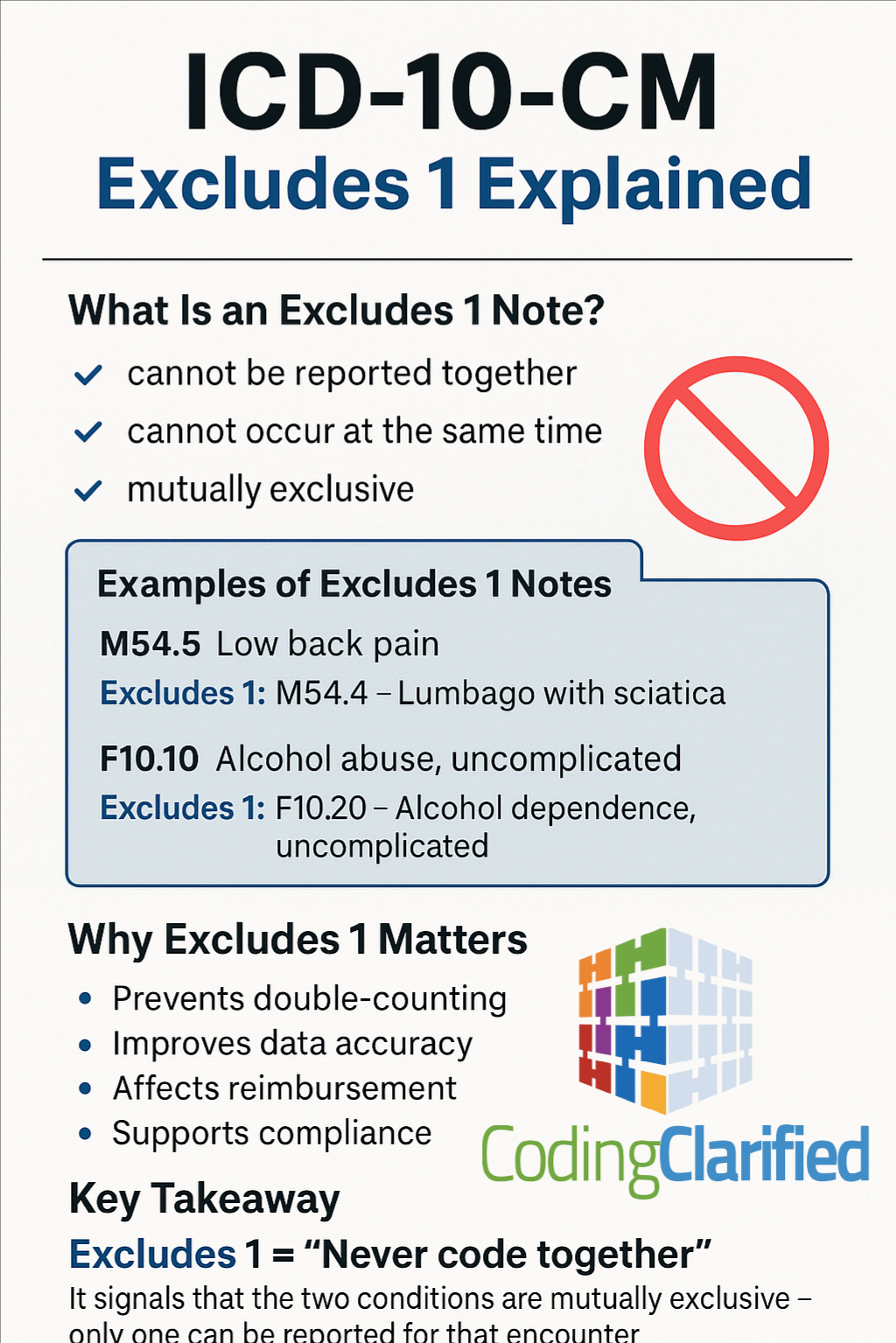Understanding ICD-10-CM Excludes 1 Notes
What Is an Excludes 1 Note?
In ICD-10-CM, an Excludes 1 note is a pure exclusion note. It means that the two conditions cannot be reported together because they cannot occur at the same time or are mutually exclusive.
When you see an Excludes 1 note under a code, it tells you that if the condition listed in the Excludes 1 note is present, you must code that condition instead of the main code—you should not assign both codes for the same patient encounter.
Official ICD-10-CM Definition
An Excludes 1 note indicates that the code excluded should never be used at the same time as the code above the Excludes 1 note. It is used when two conditions cannot occur together.
In simple terms, Excludes 1 = “NOT coded here.”
Examples of Excludes 1 Notes
Example 1:
-
M54.5 – Low back pain
-
Excludes 1: M54.4 – Lumbago with sciatica
This means if the provider documents lumbago with sciatica, you cannot also assign low back pain (M54.5)—you use only M54.4.
-
Example 2:
-
F10.10 – Alcohol abuse, uncomplicated
-
Excludes 1: F10.20 – Alcohol dependence, uncomplicated
You cannot report both alcohol abuse and alcohol dependence together. Only one applies.
-
Why Excludes 1 Matters
-
Prevents double-counting: ensures that diagnoses are not redundantly coded.
-
Improves data accuracy: aligns with clinical logic—conditions that cannot coexist are separated.
-
Affects reimbursement: incorrect dual coding can lead to claim denials or inaccurate risk adjustment.
-
Supports compliance: following Excludes 1 rules keeps coding aligned with ICD-10-CM Official Guidelines for Coding and Reporting.
Common Mistakes with Excludes 1
-
Ignoring updated guidelines: Some Excludes 1 notes were revised over the years—always use the latest code set.
-
Coding both diagnoses together: if documentation supports both, verify whether one note was reclassified to Excludes 2 in newer updates.
-
Not reviewing parent categories: Excludes 1 can appear at the category, subcategory, or code level—always read all hierarchy levels.
Coder Tips
-
Always review tabular list notes, not just the index.
-
When uncertain whether conditions can coexist, check the most recent ICD-10-CM guidelines or Coding Clinic references.
-
Use Excludes 1 as a reminder to query providers if documentation appears conflicting.
Key Takeaway
Excludes 1 = “Never code together.”
It signals that the two conditions are mutually exclusive—only one can be reported for that encounter. Careful attention to these notes ensures compliance, prevents errors, and strengthens coding accuracy.
Medical Coding ICD-10-CM Chapters


